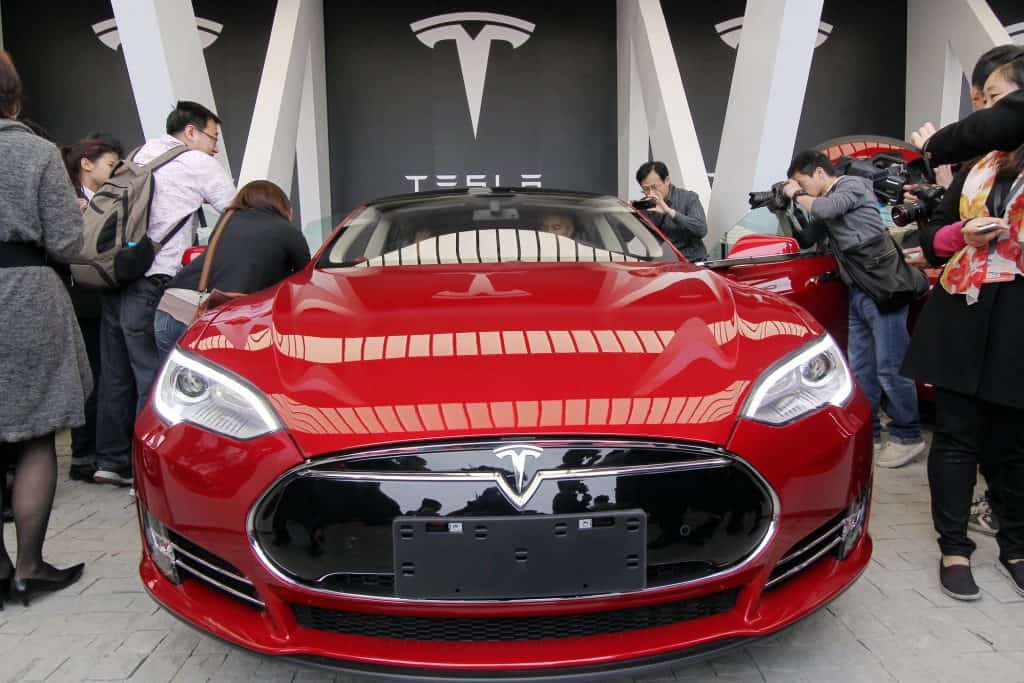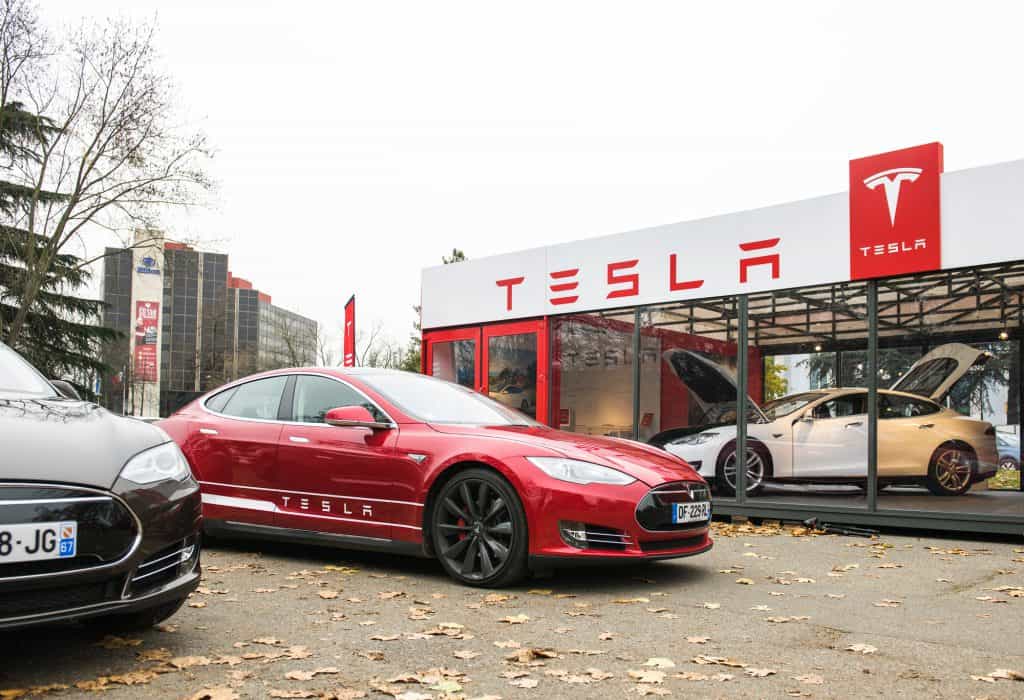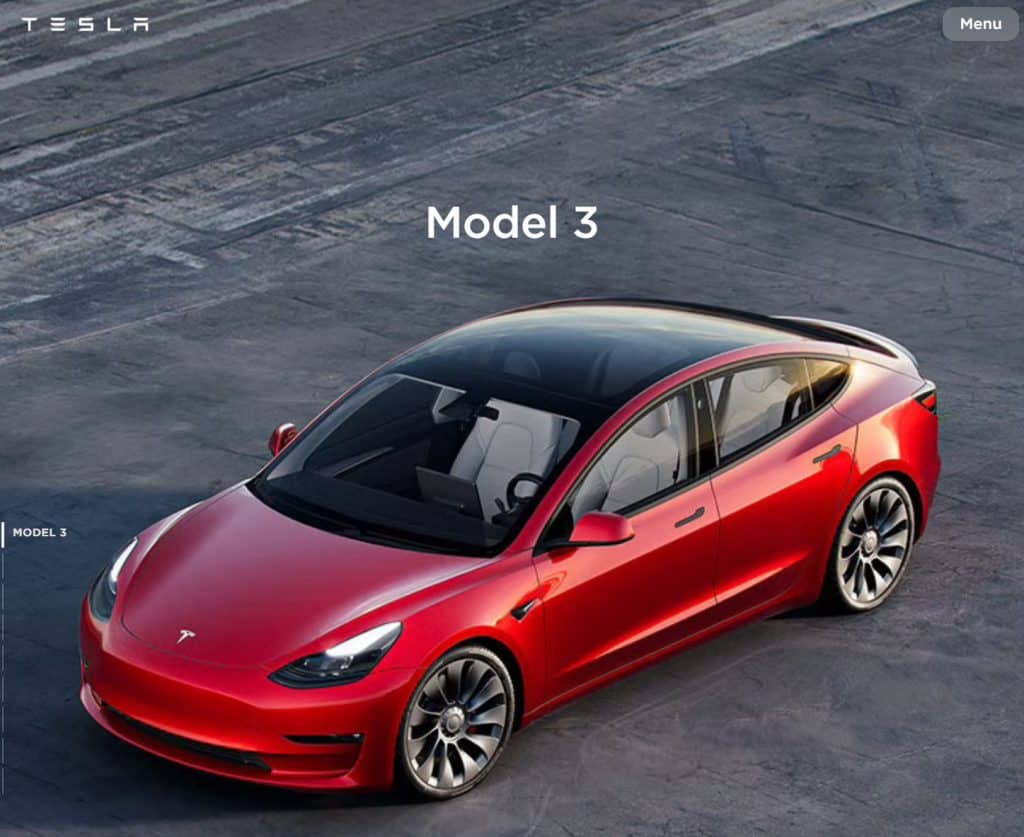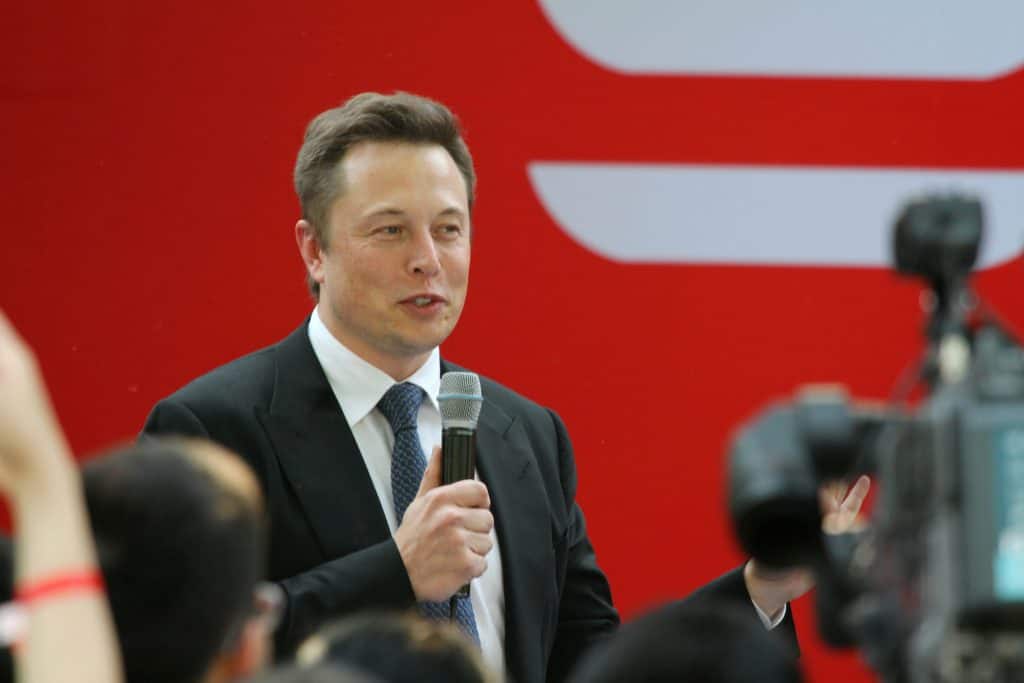A lot of car companies have a signature color and it’s usually whatever color the car is in the advertising and marketing materials. In the case of Tesla, that’s usually red. Yes, we know there are other colors of Tesla, but for most Tesla models, especially the Model S, the Model 3, and the Roadster, red is the color that comes to mind.
In a lot of cases, the signature color of the car is the standard coating and doesn’t cost any extra money. It’s when you want to change red to a metallic electric blue or pearlescent cream that things start to get more expensive, right? In Tesla’s case, their apparent signature color is actually the more expensive option in their selection.
This brings us to the core question of today’s blog – why does the red Tesla option cost more?
Background: Tesla Colors

Color choices have often presented a subject for discussion among Tesla buyers and fans. Over the years, different colors have emerged as more expensive options, with free standard options shifting. One color that does seem to stick as the more expensive option is red. Let’s first see what colors are on offer for a Tesla Model S if you were to buy it today. You can choose from:
- Pearl White Multi-Coat – Standard option, no extra charge
- Solid Black – $1500 extra
- Midnight Silver Metallic – $1,500 extra
- Deep Blue Metallic – $1,500 extra
- Red Multi-Coat – $2,500 extra
The difference isn’t even slight. It’s not just costing extra money, but a cool $1,000 more even than the other choices from Solid Black to Deep Blue Metallic. The red coat started as being $1,000 more than the others, then it was $1,500, and then went up twice more in increments of $500 to reach the current $2500.
People say that red is more expensive because it’s a multi-coat paint, but is that really the definitive difference? If so, why isn’t Solid Black the free option and Pearl White Multi-Coat a color that comes with extra cost? We’ll take a closer look in the following sections, because the fact is that the story isn’t so simple.
Tesla’s Color Reforms
Tesla has undergone a streamlining in the company when it comes to color. Back in 2012, the Model S, for instance, came with a selection of 9 exterior colors, including Anza Brown Metallic, Sequoia Green Metallic and many others that have long since not been seen again. It was in 2017 when the color selection was first cut down in number to just 7 options, and was then cut again in 2019 down to 5 color options.
The Model X had 10 color choices in 2016 when it was first released as Tesla’s first foray into the world of electric SUVs, but in the 2021 model year only offers the same 5 as its fellow EV siblings. So the general trend for Tesla in its color reformation has been to cut down on options, but why? Isn’t customer choice a good thing? Does Musk no longer believe in giving people what they want?
Production Bottlenecks
The main reason to cut down on the number of colors was actually because Musk’s company was doing exactly what people wanted — making Tesla production faster and more streamlined. Even now in the age of just 5 colors, other factors are slowing down Tesla production to the point where people are waiting months and months to get their new Tesla. In some cases, a Tesla ordered today won’t be delivered until the spring or early summer of 2022!
Imagine, then, today’s Tesla range being manufactured with potentially 10 colors to get done. All those different models and colors are a clear obstacle to efficient production, so in that sense it was a logical and good move to reduce the number of colors, but it wasn’t the only reason.
Color Popularity

Another big reason for removing color is popularity — or lack thereof. Many colors were also eliminated based on their popularity in sales. For instance, in 2018, Tesla removed Metallic Silver and Obsidian Black from the color selection of Model 3 cars. It was easy to remove those colors because the sales numbers were not on their side, therefore it’s no real loss to the lineup.
Red, on the other hand, has consistently been a popular color with Tesla cars. It has also become identified as Tesla’s “signature” color. In fact, they used to call their red paint Signature Red.
If you visit Tesla’s homepage you will discover that the Model S, Model 3, and Model Y pages are all headlined by an image of a red Tesla car:

The only one to defy this theme is the Model X, which is headlined by a white model. The Red Multi-Coat paint is still available on the Model X, however, for the additional $2,500 fee.
The popularity of the red paint is a big part of what stopped it being cut out based on production issues. According to Elon Musk, the red paint job is actually very hard to achieve and get right, which is a good reason to have removed it when production continues to be a struggle. Musk said:
“We tried every possible way to make the red look 3D without floating a special red tint in the primary gloss layer, but no way. We have to stop the whole paint shop for red & it looks like an episode of Dexter.”
Elon Musk
Indeed, photo evidence of red paint jobs does seem to confirm the seeming horrors of red.
Reasons Why Red Costs More

So, why oh why does red really cost more? In 2018-2019, Solid Black was the free option and both multi-coat options, white and red, cost extra money. In 2021, it’s the white multi-coat that can be free, but the red that costs a whopping $2,500 more. What’s going on?
Production Process
If the red paint is really so much harder to achieve, then it makes sense to make it cost more. It takes more time and therefore costs Tesla more in labor and materials to get the job done. That should therefore translate into a higher cost.
Makes Business Sense for Tesla
Following on from the previous point, it therefore makes good business sense for Tesla to sell the red Tesla models for a higher price to cover their costs. Let’s not forget that for years Tesla’s car sales haven’t even come close to being the company’s main source of profitable revenue. The company has been making the bulk of its money by selling its environmental green credits to other OEMs.
Help Easing the Burden
Finally, if a large premium on red discourages some buyers from choosing the red option, then it means that production can speed up as fewer cars are ordered in red. Being the “signature” color of Tesla cars, red is unavoidably popular, so they can’t rely on that factor changing in order to ease the burden on production. What they can do, however, is raise the price enough so that it’s a deterrent to too many people buying it in that color.
Perhaps if they find a better painting method in the future, or at least if production capacity increases, then perhaps that price can come back down to allow fans of that signature red to enjoy their Tesla in the color they want most.
Fact or Myth? A Red Tesla Also Costs More to Insure
A red Tesla certainly costs more to purchase, but does it cost more to insure as well? There’s a long-standing belief and debate that certain colors of car – including red – cost more to insure. According to the Insurance Information Institute, however, this is simply not the case, and in fact: “the color of the car you drive does not affect the price of auto insurance.”
Perhaps the myth stems from the fact that red is a popular and prominent color choice for many high-end cars, including many sports cars, as well as cars like Teslas. These are typically high-priced cars which carry a more expensive insurance premium anyway due to them being more of a financial risk for the insurance company. The III and the National Association of Insurance Commissioners make it clear that the main factors affecting insurance are:
- Make, model and year of the car
- The driver’s age, gender, and driving history
- Average annual mileage
- Zip code
- Where the car is usually parked
- Coverage chosen
- Level of deductible
- And other factors
Color of the car doesn’t come into the equation, it would seem.
Conclusion: Is a Red Tesla Worth $2,500 More?
In most cases, if you have the budget to afford a Tesla where the “affordable” models are starting at $40,000 or so, then an extra $2,500 shouldn’t really make a huge difference. It seems to rely more on filtering out people who believe that this amount of money just for paint is not worth it, while those who are determined to drive a red Tesla anyway will continue to order them as such.
If you really want the red color, and you have the money to spare, then why not? In other cases, there’s no additional benefit to getting red over another color. If you think the multi-coat brings some advantages, then you can get the white multi-coat for free.
3 comments
I own a “resale red” 2018 three and it still looks brand new today and its never been washed (I use a car dealers mop only).
Ah nice, it’s definitely promising that the paint condition is still like brand-new.
The reason any-color-other-than-standard costs more is that purchasing a Tesla is a subsidized virtue signal. The Woke signal their virtue by spending money on things that they believe display their ecological, emotional and intellectual superiority over us deplorables. Someone who buys a “mere” standard-issue Tesla is not as worthy as someone who pays more for the same car.